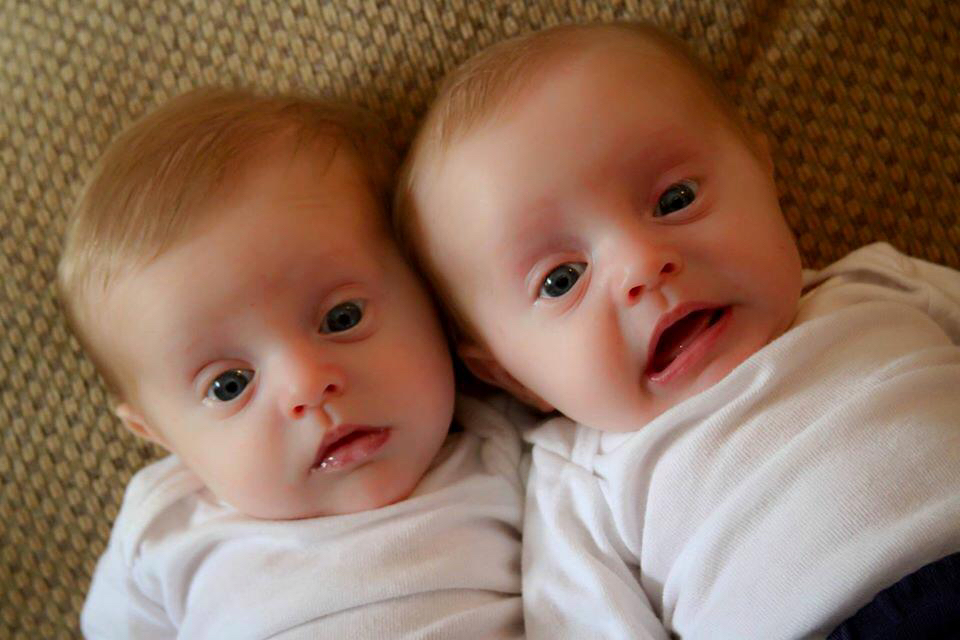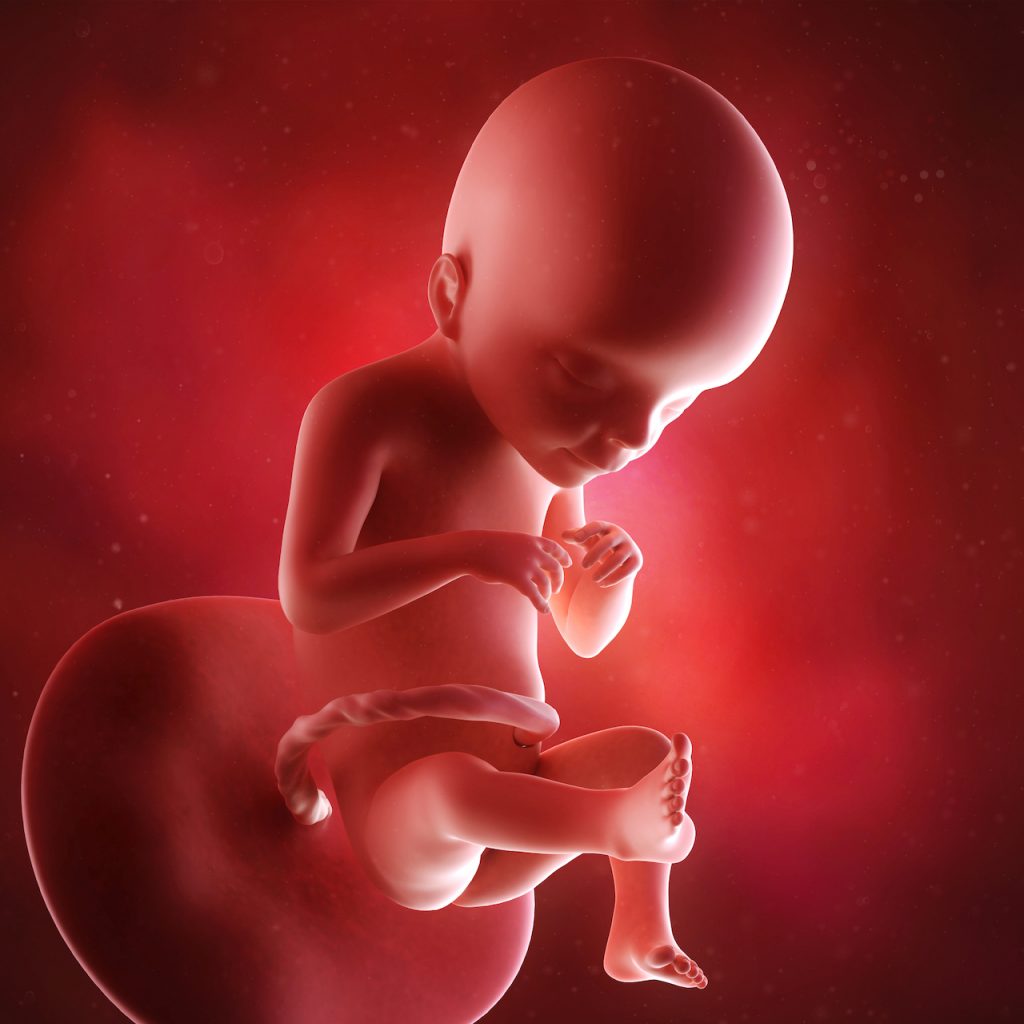There are many things that contribute to fetal constraint (stuck babies). Any one of them can operate independently, but usually there are multiple causes for less than optimal fetal positioning that have synergistic or additive effects. As I continue to explore the multiple causes, I will provide examples of how these things can work in concert to prevent babies from moving into more ideal positions for their continued gestation, birth and a comfortable, functional life in their bodies outside the womb.

Today I’ll discuss the fetal factors (things about the baby) that cause fetal constraint. There isn’t much we can do about the fetal factors aside from resolving the other things (maternal and cultural) that we can readily do something about. As I mentioned, rarely is there just one thing causing fetal constraint. Last week I discussed the maternal factors — things about the pregnant parent. Here’s the link to that post. The week before I explained why engagement is pathology and the role it plays. Another link… Next week I’ll describe the cultural factors. In the fifth installment I’ll describe the labor and birth problems caused by fetal constraint. Surgical birth would be one of them, but there are many others. In the sixth installment I write about the actual effects of stuckness on the babies themselves. These are things like torticollis — and more. Stay tuned.
If you haven’t already done it, take a guess. Do you think there are more maternal factors, more fetal factors or more cultural factors contributing to stuck babies? File your answer away and you can do the tally in a week when I unveil part four of this story.
Multiples
Twins and higher-order multiples are special for lots of reasons. In this discussion they are special because, depending on which kind they are, they could be either in the fetal factor category, the maternal factor category or the cultural factor category.
Identical Twins
Identical twins are a mystery and relatively rare. They happen when one egg gets fertilized and forms a zygote. Then for some unknown reason (seriously, nobody knows why), it splits into two genetically identical embryos. The tendency to produce identical twins does not run in families. This scenario would qualify as a fetal factor.
Ah, but there is another way to do it. Sometimes identical twins may also be created artificially by embryo splitting. It can be used as an expansion of in vitro fertilization (IVF) to increase the number of available embryos for embryo transfer. This twinning scenario would qualify as a cultural factor.
Non-Identical Twins
These twins develop from separate eggs fertilized by separate sperm. They could have different fathers, right? There is a genetic predisposition for these kinds of twins because the tendency to release more than one egg per ovulation cycle runs in families. A woman who is herself a non-identical twin has a greater chance of producing non-identical twins than a woman who is not this type of twin. Genetically, these twins are not identical and would share the same amount of DNA as any siblings. This scenario qualifies as a maternal factor.
What about fertility drugs, you ask? If the pregnant person took fertility drugs that caused more than one egg to be released in a cycle, the resulting twins would qualify as a cultural factor.
What’s the third way? An IVF embryo transfer of more than one (non-identical) embryo would qualify as a cultural factor.
Multiples Simply Have Less Space
More than one baby equals less space to move around. Period. Look carefully at the twin babies above. Are they Identical or non-identical? I happen to know these babies. I witnessed their vaginal birth in the hospital. In fact, they were VBAC babies. How cool is that? We all assumed that they were not identical. They looked incredibly different at birth. In this picture they are three months old and still look different. As they grew during their first year they began to look more alike. Their mom had a twin zygosity test done at one year. They are identical. It’s fascinating that they looked so different when they were young. The reason is because they developed into significantly different space. The baby on the left had his head jammed into his mother’s pelvis for weeks. The baby on the right didn’t. My motto is, “Babies grow into available space”. After these babies got themselves born they had soft available space into which to grow. This allowed their genetic heritage to come through.
Low Amniotic Fluid
Amniotic fluid serves many purposes. It acts as a cushion, a lubricant and a temperature insulator for the baby. It also contains antibodies that prevent infection. The lubrication and buoyancy properties allow babies to float around and strengthen their muscles and bones during their time in the womb. Amniotic fluid also helps float and protect the umbilical cord — the baby’s lifeline. Although, the umbilical cord is pretty tough. They look so delicate and fragile due to their translucency, but if you have ever cut one — even with very sharp scissors — you know how durable (and slippery) they really are.
Reflexes and Movement
As babies float around in the amniotic fluid they experience touch on various parts of their bodies. They have reflexes that cause them to automatically move in response to these touches. The reflexive movements serve to strengthen their muscles so that they can begin to voluntarily move and control their movements after they are born.
Babies need strong muscles to participate in getting themselves born and then successfully seek the breast and self-attach to feed. You heard right. Babies actually have inborn reflexes (called Primitive Reflexes) that, among other things, cause them to move in certain ways to get themselves born. And, yes, left to their own devices they can crawl to the breast, find it, latch on and suck, swallow and breathe in a coordinated way. These two series of reflex-driven movements are sometimes called the Cardinal movements and the Breast Crawl.
What Is Amniotic Fluid?
At first, amniotic fluid consists of fluid from the pregnant parent’s body. Around 20 weeks gestation all of that changes. Amniotic fluid is then produced by the baby. It’s mostly urine. That’s right, amniotic fluid is baby pee. Babies swallow and breathe amniotic fluid. This strengthens the muscles associated with respiration and digestion. They need this practice and strengthening opportunity to be able to breathe air and swallow milk once they are born.
Around 30 weeks gestation the ratio of baby to amniotic fluid tips in favor of more baby – less fluid. Prior to that it was the other way around: more fluid – less baby. Because of this, the baby becomes less buoyant and more subject to the forces of gravity as gestation progresses. The baby’s head is the heaviest part of their body. When the baby is less buoyant they naturally move head down if they weren’t there already. This is the normal scenario.
Sometimes babies make an insufficient amount of amniotic fluid. This condition is called oligohydramnios. There are other conditions that may be associated with this, but for our purposes we will concentrate on one of them — the actual mechanical effects of being a shrink-wrapped baby. It should be obvious to you by now that the babies who have low amniotic fluid can’t move around as well as babies who have ample fluid. They develop in one position and get born into the twisted shapes into which they developed — if the low-fluid condition lasted for some time. I also wonder about the primitive reflex development and strength-building opportunities for these babies. Some muscles may be weak because the touch that would have stimulated their reflex-driven movements was insufficient or absent. Each baby’s situation is unique. It all depends on how stuck they were, what position they were in, and how long they were stuck that way.
Short Umbilical Cords
This illustration is admittedly freaky, but this baby does have a seriously short cord. Umbilical cords actually come in various lengths. Short cords are a little like a short leash. The baby can have less freedom of movement in the womb because of it.
Long Umbilical Cords
Long cords are more fascinating than short cords for sure. I suppose that a very long cord that gets wrapped around a baby multiple times could be a cause of fetal constraint, but short cords are the ones that reliably prevent movement. There are old wives tales about long cords, by the way. The story is that the most active babies move around so much they stretch their cords and cause them to grow longer. I don’t buy it. We really don’t know what makes a cord long or short. Interesting fact: the long ones are more likely to be tied in an actual knot. That’s right, the little babies sometimes swim through a loop of cord in exactly the right way to tie a for-real knot. The cord is strong. A knot is very rarely a danger to the baby.
The Dreaded Cord-Around-The-Neck Story
I can’t talk about umbilical cords without doing a little myth-busting. Longer cords are famous for wrapping around a baby’s neck more than once. This is not a problem. Really. Around 30% of babies have cords around their necks at birth. The babies don’t get strangled or anything like that. When the baby gets born we can slip the cord over their heads or make the loop wide enough for the baby to slip through the loop. They can also somersault their bodies out once the head is born. These are routine maneuvers well-known to birth attendants. We, as birth workers, don’t think much about it, but somehow other people think it is some kind of emergency when a baby has a cord around the neck. It isn’t.
That’s it for the fetal factors. Next week I’ll write about cultural factors. Until next week…
Love,
Carol


